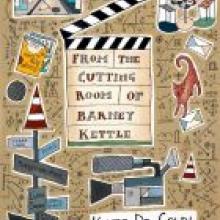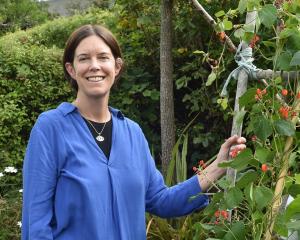
New Zealand author Kate De Goldi's latest offering continues in the vein of one of her previous books, The 10pm Question; the central character is a teenage boy, but the story will appeal to all ages.
Barney Kettle is a budding writer/director who loves making short films.
A self-confessed megalomaniac, he bosses around his friends and his younger sister Ren, who is producer/set designer/costume manager/location scout/caterer.
In many ways the siblings are chalk and cheese.
He is creative, messy, chaotic, and loves interacting with all and sundry.
She is grounded, tidy, organised, and a home girl.
However, they are both likeable, they share a fantastic sense of humour, and their complementary skills help them work well together on their next project, The Untold Story, of High St, in Christchurch, where they live above their dad's junkshop.
The story was a little slow at the start, with a lot of detail, and I sometimes got confused with so many companies, characters and children involved.
As Ren would do, I tried to make a list of who lived where, with whom, and what business the family owned, but gave up and just let De Goldi's language carry me forward.
Barney has ''thethrillingalchemy'' of film-making, and Ren has a crush on an Italian, Battista, so finds things ''molto interesting'' or ''molto exciting''.
At one point, ''Ren huffed, a fifth-cousin to a laugh'', a delightful phrase.
Barney and Ren become closer while filming the people and places in High St, and they find zines in their neighbourhood.
These are small booklets made from a single piece of paper. (Feel free to google ''zine'' and make one. I did).
The story gains momentum and many mysteries ensue.
Who is making and leaving the zines to be found?
Are the stories in them true?
Who is thieving from the various shops?
And an added point to ponder: who is actually writing the story?
I've read a few novels encompassing the 9/11 tragedy in New York, including When God was a Rabbit by Sarah Winman and Julia Glass' The Whole World Over, both of which I was reminded of.
This book doesn't mention the September 2010 earthquake but you get the feeling of inexorably moving towards the devastating February 2011 event.
The fallout and aftermath are poignant: my father once lived in a flat in High St, and he felt the loss when we visited the site only a couple of years ago.
Everyone was touched by that disaster, and De Goldi's High St community are no exception, but solutions are found, questions answered, and the ending is molto moving and memorable.
• Rachel Gurney is an avid Dunedin reader.











